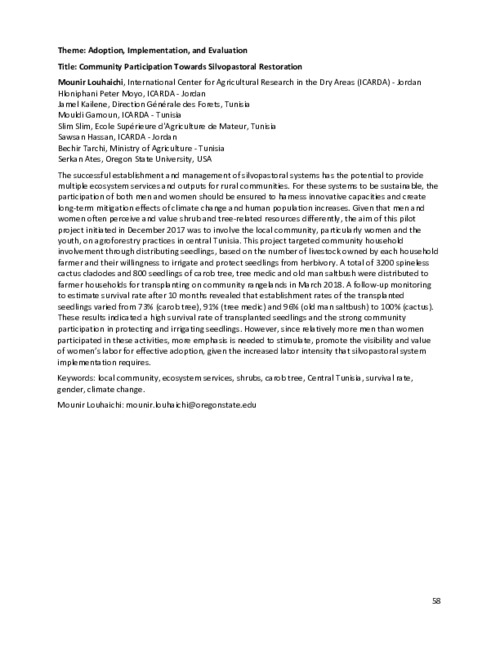Community Participation Towards Silvopastoral Restoration
Abstract
The successful establishment and management of silvopastoral systems has the potential to provide multiple ecosystem services and outputs for rural communities. For these systems to be sustainable, the participation of both men and women should be ensured to harness innovative capacities and create long-term mitigation effects of climate change and human population increases. Given that men and women often perceive and value shrub and tree-related resources differently, the aim of this pilot project initiated in December 2017 was to involve the local community, particularly women and the youth, on agroforestry practices in central Tunisia. This project targeted community household involvement through distributing seedlings, based on the number of livestock owned by each household farmer and their willingness to irrigate and protect seedlings from herbivory. A total of 3200 spineless cactus cladodes and 800 seedlings of carob tree, tree medic and old man saltbush were distributed to farmer households for transplanting on community rangelands in March 2018. A follow-up monitoring to estimate survival rate after 10 months revealed that establishment rates of the transplanted seedlings varied from 73% (carob tree), 91% (tree medic) and 96% (old man saltbush) to 100% (cactus). These results indicated a high survival rate of transplanted seedlings and the strong community participation in protecting and irrigating seedlings. However, since relatively more men than women participated in these activities, more emphasis is needed to stimulate, promote the visibility and value of women’s labor for effective adoption, given the increased labor intensity that silvopastoral system implementation requires

